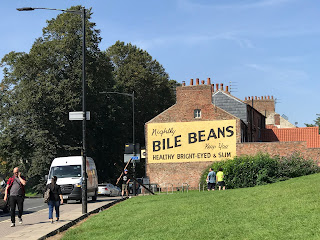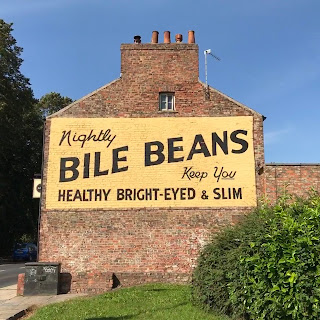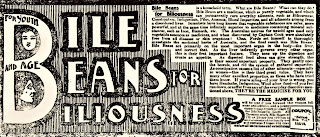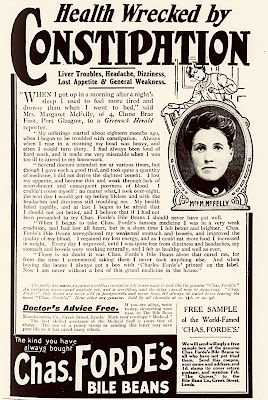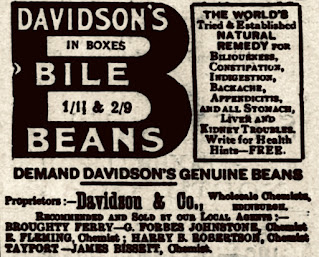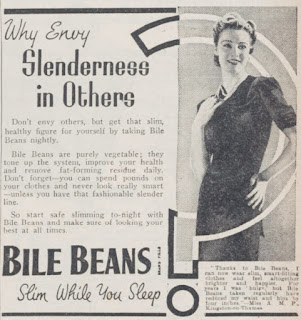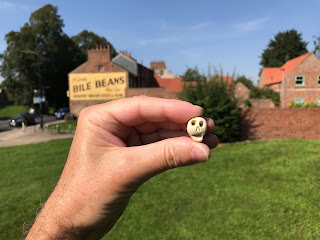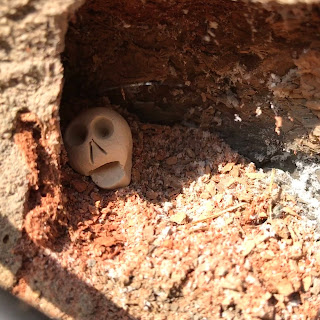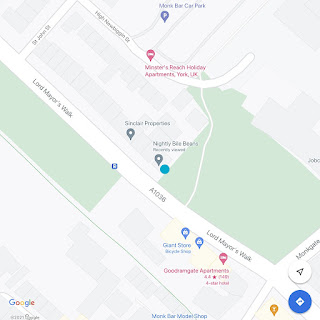On
my many trips to York I have often passed by the painted sign on this side wall
for Bile Beans.
I
always visualised Bile Beans as being an inferior alternative to those produced
in a delicious tomatoey sauce by Mr Heinz and thought the tag underneath about
keeping you ‘healthy, bright-eyed and slim’ was along the lines of the rhyme we
all knew from school. You know the one –
‘Beans
Beans, they’re good for your heart
The
more you eat the more you fart
The
more you fart the better you feel
So,
eat beans with every meal.’
It
turns out though, that Bile Beans weren’t something you had on your toast or
with a pie and mashed potato but were rather a quack medicine. They weren’t beans in the way we think of
them, as the beans being referred to were actually bean shaped pills.
Bile
Beans were the invention of a charlatan and con man called Charles Edward
Fulford, a Canadian who had moved to Australia.
Fulford had worked for a time in a pharmacists and had obviously seen
that there was money to be made in medicine, potions, and cure-alls. While in Australia he teamed up Ernest Albert
Gilbert, who ran a stationary business in New South Wales, and they decided to
set up as medicine and pill manufacturers.
Their first foray into the world
of miracle cures was ‘Gould’s Tiny Tonic Pills’. These were purported to cure everything from
‘female weakness’ to ‘influenza’ to ‘lack of ambition’. However, the pills were not a success, so
Fulford came up with another formula and a new name – ‘Chas Forde’s Bile
Beans’.
Bile
Beans were advertised as having been created by Charles Forde, an eminent and
skilled scientist. He had carried out
research into a natural vegetable substance used by the Aboriginal people to
keep themselves healthy and through this research had come up with a wonder
pill to cure many ailments. Charles
Forde did not exist, both he and his research being made up by Fulford.
Through
a huge advertising campaign under the catchy slogan of ‘Bile Beans for Biliousness’
(Yeah, Beanz Meanz Heinz is so much better), the sale of Bile Beans took off
and soon they were being sold all over the world. In 1899 Fulford and Gilbert opened a factory
in Leeds to produce their quack product and kept on with their huge advertising
campaign. Amongst the various claims
made for Bile Beans were that they would cure constipation, indigestion, piles,
anaemia, headaches, loss of appetite, heavy colds, rheumatism, liver trouble,
bad breath, could rid the bowels and blood of impurities and could help you
stay slim.
So,
what did this wonder drug do and what was really in it you may ask? Well, it would appear that the pills acted as
a laxative and according to analysis when they were examined for the British
Medical Council, they contained aloin (plant extract used as a laxative),
cardamom, peppermint oil, wheat flour and extract of colocynth (colocynth being
a tropical fruit also called bitter apple, which also appears to have laxative
effects).
As
the success of Bile Beans grew, they attracted several imitators. One of these being George Davidson, who was
producing a product in Edinburgh called Davidson’s Bile Beans.
In
1905 Fulford and Gilbert sought an injunction against Davidson to stop him
using the Bile Beans name claiming the name was a registered trademark that they
had acquired. The evidence was then
presented to the Court of Session in Edinburgh where it was admitted to the
Judges hearing the case that Charles Forde did not exist and the formula for
the pill was written by Fulford, who was not an eminent scientist and had made
no research into the Australian herbs he claimed made up the ingredients of the
pill. When the case had concluded a
written judgement was made by the Judges, who ruled against Fulford and Gilbert,
stating in rather scathing terms that – ‘…the complainers (Fulford and
Gilbert’s) trade was a fraudulent trade, and that no action ought to be
entertained by the courts of Scotland to protect it or the name used in
connection with it…’
However,
despite the ruling against them, Bile Beans continued to be sold up until the
1980s, when the product was withdrawn from sale and manufacture ceased.
Both
Fulford and Gilbert became rich men through the sale of Bile Beans and other
dubious products. When Gilbert died in
1905, aged 30, he left an estate worth around £31,000 (nearly £4,000,000 in
today’s money) and when Fulford died in 1906, aged 36, it was reported that he
was worth over £61,000 (around £8,000,000 in today’s money). Given that they both died in their thirties,
it would seem that their product didn’t do much good in keeping either of them
healthy and bright eyed.
I
left the Skulferatu that accompanied me on my walk in the hollow
of a crumbling brick in the wall below the sign.
The
coordinates for the location of the Skulferatu are –
Latitude 53.963638
Longitude -1.078886
I
used the following sources for information on Bile Beans –
Bile Beans for Inner Health by
Raymond C. Rowe
International Journal of
Pharmaceutical Medicine 17(3-4):137-140
2003
The Maitland Weekly Mercury, Saturday
18 December 1897 (Gould’s Tiny Tonic Pills advert)
The
Maitland Weekly Mercury, 18 Dec 1897 - Trove (nla.gov.au)
More Secret
Remedies. What they Cost and What they
Contain.
British Medical
association
1912
Reports of Patent,
Design and Trade Mark Cases, Vol XXIII, No 31
Bile Bean
Manufacturing Company v. Davidson
1906
Leeds Mercury – Friday,
13 April 1906
Will of late Ernest
Albert Gilbert
Daily Mirror –
Friday, 13 April 1906
£30,000 from Patent
Medicine
Yorkshire Post and
Leeds Intelligencer - Saturday 10 November 1906
A Patent Medicine
Manufacturer’s Bequests
Bile Bean adverts
from –
Belfast Telegraph – Friday,
13 May 1904
Broughty Ferry Guide
and Advertiser – Friday, 18 December 1908
The Quiver – February
1909
Aberdeen People's
Journal – Saturday, 11 February 1939
Value of Gilbert and Fulford’s
estates in today’s money calculated using the bank of England’s Inflation
Calculator
Inflation
calculator | Bank of England
